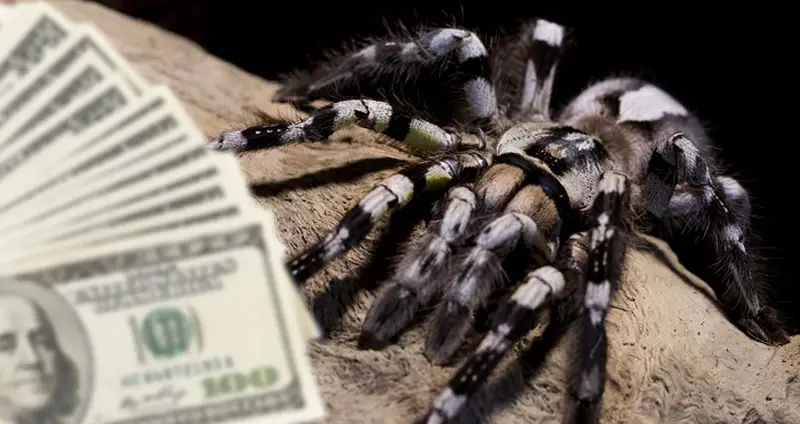The world of tarantulas is extremely interesting. There are hundreds of different kinds, ranging from generic and docile to unique and downright wild! With so much variation in the different kinds of tarantulas, there’s never a dull moment within the tarantula hobby.
With the wildly different tarantulas that exist, there comes wildly different prices. While some of the more common tarantulas sell for $20 every single day from tons of tarantula breeders, there are rarer, more exciting types that sell for hundreds, if not thousands of dollars.
Having one of these exorbitantly expensive pet tarantulas in your collection will immediately bring it to another level — something enthusiasts are constantly striving for.
Table of Contents
Top 10 Most Expensive Tarantulas
The list of tarantulas mentioned below was compiled after referencing several different sources. Those sources include reptile marketplaces, private breeders, and messaging boards. Since there are no set prices for tarantulas, they can be bought and sold for vastly different prices.
Prices in this post were derived from several factors. These tarantulas are assumed to be fully-grown, female, and especially attractive for the species. Slings, males, and unsexed juvenile tarantulas tend to sell for much cheaper than sexed adult females. Additionally, “new” species are avoided since the excitement around them temporarily drives up prices.
So, without further ado — let’s get into the 10 most expensive tarantulas!
10. Martinique Pink Toe Tarantula – $200
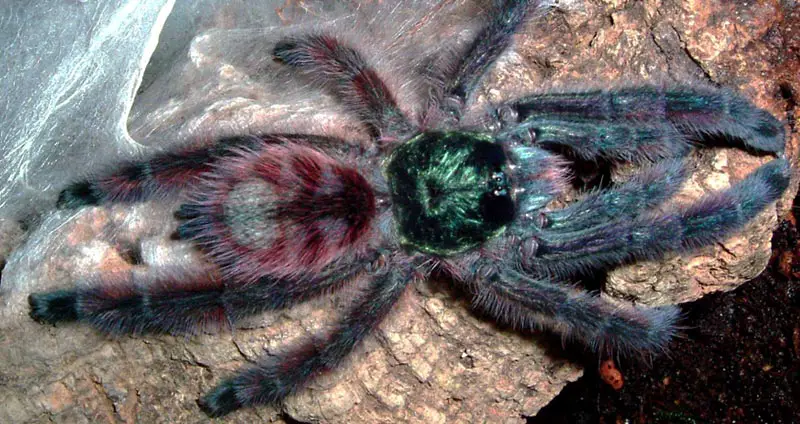
Caribena versicolor – This tarantula enjoys a stellar reputation due to its exceptional agility and the unique colors on its fuzzy body. It also happens to be the perfect starter tarantula for hobbyists, both beginner and expert.
The coloration on this species is something else. Blues, greens, reds, and pinks in interesting patterns define Caribena versicolor. This, combined with its great personality, makes it a highly-desired species.
9. Burgundy Goliath Bird Eater Tarantula – $250
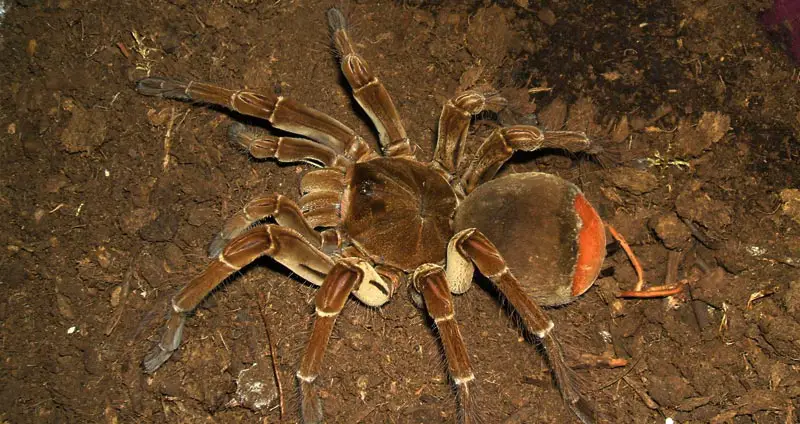
Theraphosa stirmi – One of the largest spiders in the world, making it a very coveted species among passionate collectors. Adult females can reach a legspan of up to 11 inches and live for 20 years, meaning that you get a lot of tarantula for its purchase price.
Despite its large size, it’s actually a decently simple tarantula to care for. It has a good temperament and enclosure requirements that aren’t hard to meet.
8. Gooty Sapphire Ornamental – $250
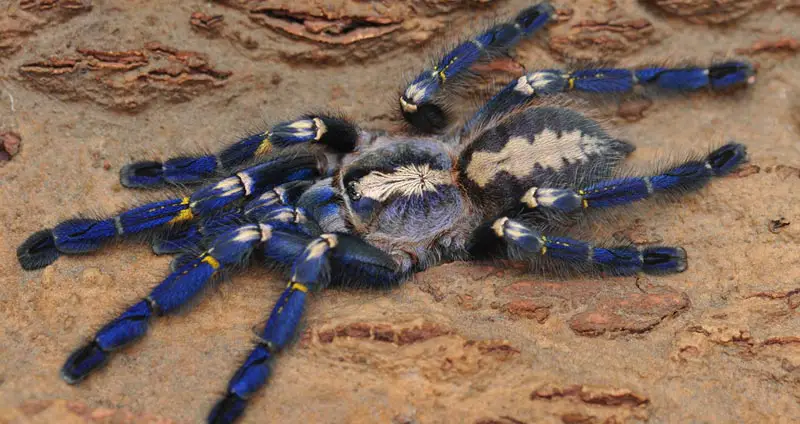
Poecilotheria metallica – You’ll be hard-pressed to find a more visually-stunning tarantula. It’s the only blue species in the Poecilotheria genus and features a beautiful fractal pattern on its abdomen with blue, white, and yellow iridescent coloring throughout its body.
This unique coloring is a huge driving factor behind this species’ popularity.
In the wild, these tarantulas live in trees and sometimes live communally when tree space is scarce. They’re also photosensitive, meaning that they don’t enjoy direct light shining on them.
While it is an old world tarantula, it’s actually quite skittish and takes a bit more provocation before it bites. However, its bite is quite painful, utilizing venom that’s much stronger than many other tarantulas.
Another driving factor behind this species’ high price is its exclusivity. Gooty Sapphires are listed as critically endangered due to their rapidly depleting natural habitat.
Fortunately, there are breeders that are doing an excellent job keeping this species alive and available for enthusiasts to appreciate in person.
7. Brazilian Giant Blonde Tarantula – $250
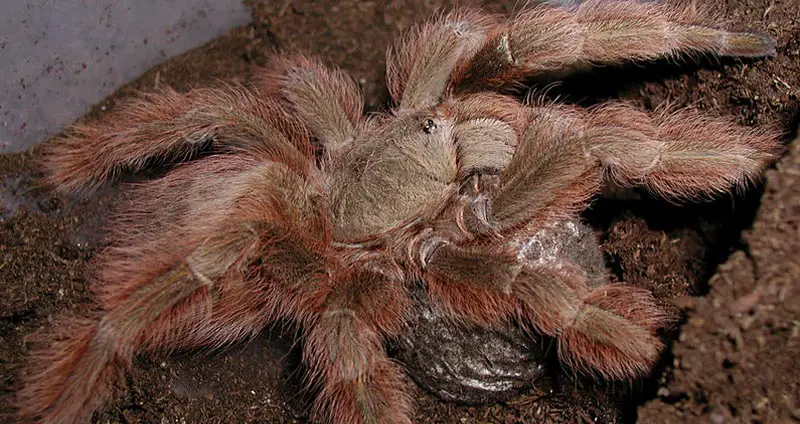
Nhandu tripepii – A bird spider with some of the most impressive hairs you’ll see on this kind of tarantula! It’s a large terrestrial species with a consistently-pink coloration over its entire body.
While this is a photosensitive, skittish species, it grows to a decent size and stays out in the open more as it ages — putting itself on display.
Additionally, this tarantula has a huge appetite and puts on a show every single time it takes down its prey.
6. Chilobrachys sp. Electric Blue – $350
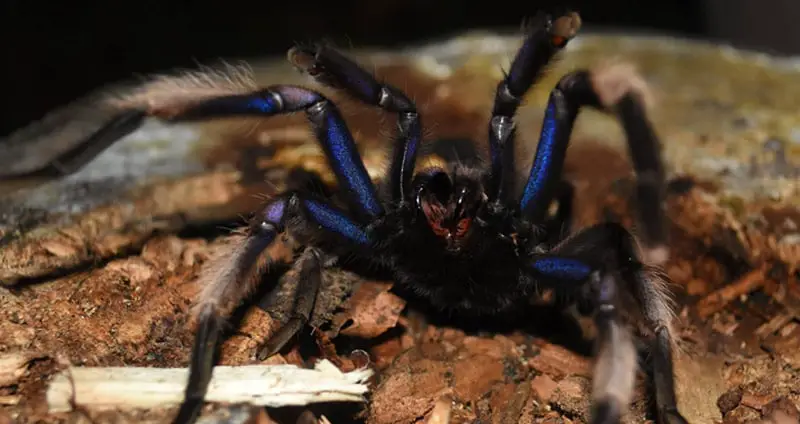
Chilobrachys dyscolus – Also known as Chilobrachys sp. Electric Blue, this tarantula is something that you don’t see every single day. Chilobrachys is a genus that so many people love, and it’s quite clear why that is.
This tarantula is very active and aggressive while boasting a stunning appearance. These traits combine to create a very unique and visually appealing species that’s well worth the money.
While they are beautiful, these old world terrestrial tarantulas absolutely love to burrow. This means that they may not be visible too much. However, females feature beautiful blue accents over their body, making the times that they are seen very special.
5. Goliath Bird Eating Tarantula – $350
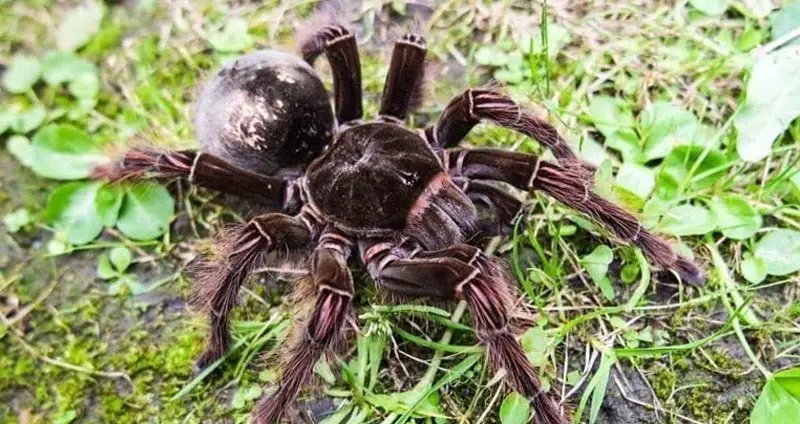
Theraphosa blondi – This stunning bird spider from South America is highly coveted because of its impressive size. In fact, it’s one of the largest spiders in the world, ranking an impressive third largest.
This massive size has made them a must-have for collectors, but their rarity has inflated their price to around $1000.
It’s important to note that Theraphosa stirmi looks incredibly similar to this species but is easier to breed, so it fetches a lower price. This is good for money saving, but it’s also the root of scams and misinformation.
4. Sumatran Tiger Tarantula – $400
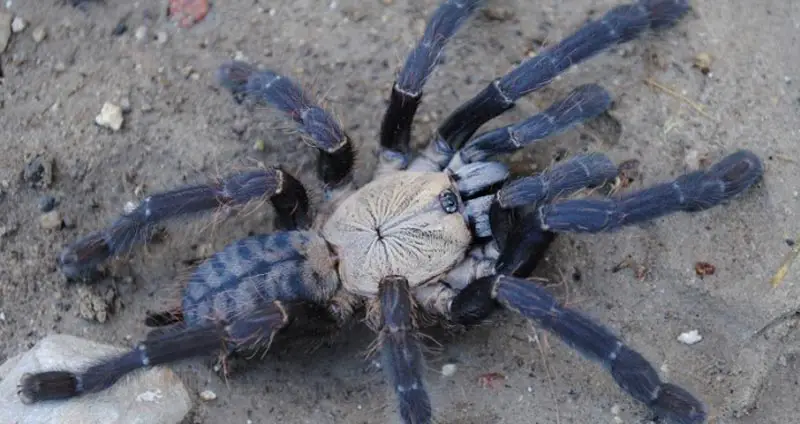
Cyriopagopus sp. “Sumatran Tiger” – A beautiful bird spider that fetches a very high price because of its size, temperament, and coloration.
“Tiger” in this tarantula’s name refers to the stunning striped pattern on its abdomen. It has a lighter carapace and dark blue abdomen and legs.
Unfortunately, this is a bit more of a timid species, meaning that it hides for longer periods of time. While hiding, it creates intricate burrows underground.
3. Red Island Birdeater Tarantula – $500
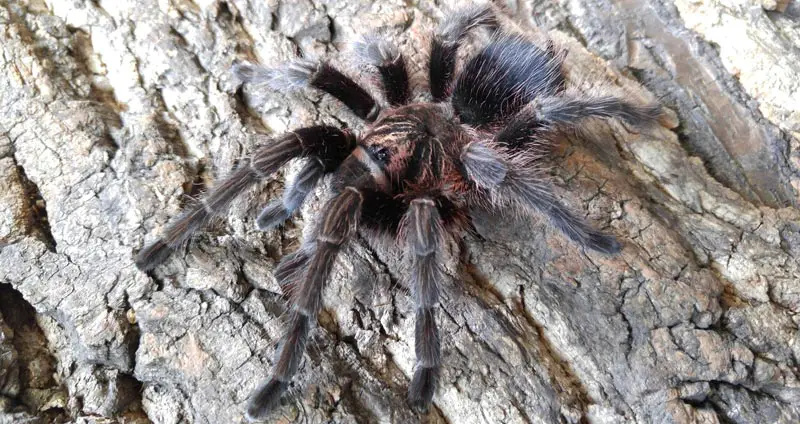
Phormictopus atrichomatus – A large terrestrial species that’s fast-growing and has quite a large personality. Its care requirements aren’t very extensive, so many enthusiasts are willing to spend a decent amount of money to own one.
The special thing about this species is that in the right lighting, it displays beautiful purple coloration. Very few tarantulas possess this characteristic, so it’s truly something special and desirable.
2. Colombian Lesserback Tarantula – $600
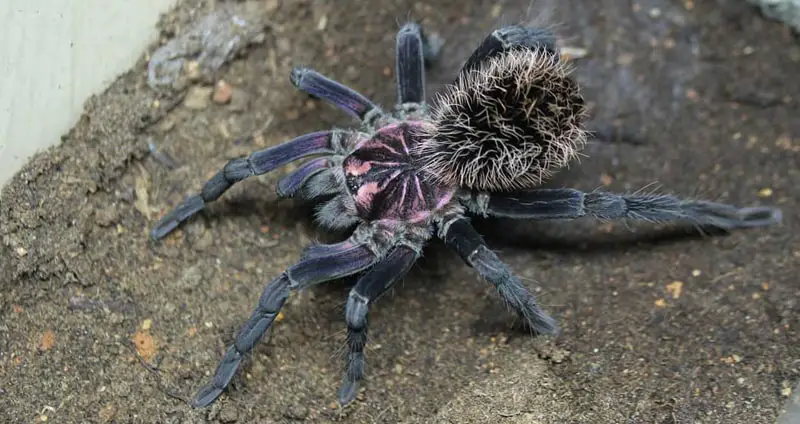
Xenesthis immanis – This is easily one of the most sought-after tarantulas that exists today. A bird spider that reigns for Colombia, it’s covered in woolly hairs and an absolutely stunning appearance.
There are actually several types of this species, all fetching different prices. Pictured is Xenesthis immanis “blue”, which has unparalleled coloration and fetches around $1300 for a fully-grown female specimen. The “bright” coloration yields a black tarantula with purple coloration on its carapace and costs around what the blue costs.
Even the standard Xenesthis immanis has stunning patterns and colors that help it sell for over $1000.
1. Brazilian Jewel Tarantula – $800
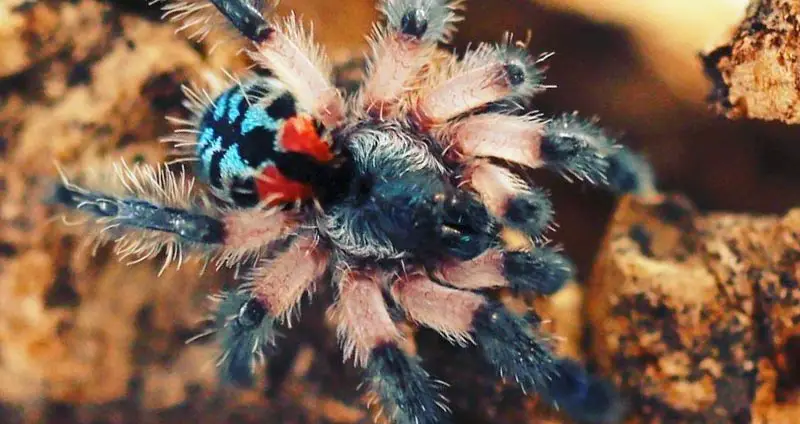
Typhochlaena seladonia – Easily one of the most visually-stunning tarantulas available. This species only measures about 2.5″ in legspan, but it has great styling to make up for it.
Its body features reds, blues, yellows, blacks, pinks, and everything in-between. This coloration, combined with a bulbous abdomen, make it, frankly, adorable.
Additionally, it has the very interesting hunting strategy of constructing trapdoors in bark and ambushing prey as they walk by. Fascinating to watch!
Conclusion
Not many people would be able to guess that some tarantula species regularly sell for hundreds of dollars. It takes a true tarantula enthusiast to understand why they are so expensive and even think about purchasing one.
Which one of the tarantulas listed above is your favorite? Do you have it in your collection or hope to add it soon? Let us know in the comments below!

